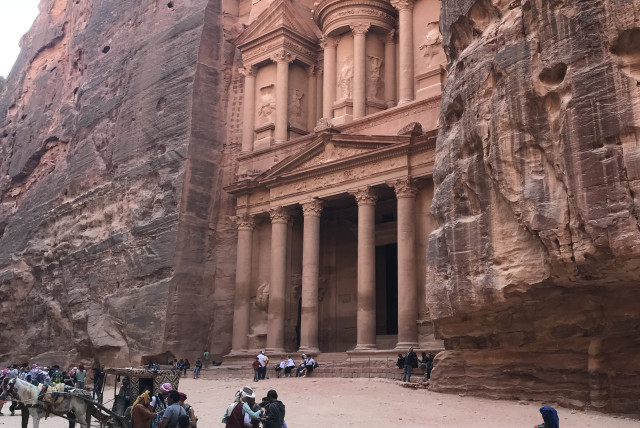Three UNESCO world heritage sites worth a visit

There are over 1,100 UNESCO world heritage sites around the world. Here are a few you can go visit.
Humanity has been on Earth for tens of thousands of years, spreading across the planet and developing thousands of unique and diverse civilizations and cultures.
Naturally, many locations around the world, some natural and some manmade, became central parts of these cultures and subsequently formed integral corners of their heritage—and, by extension, all of humanity's collective heritage.
These sites have been organized and recognized by the United Nations body UNESCO as world heritage sites, of which there are over 1,100. They are major tourist destinations, drawing in hundreds of thousands of people worldwide each year.
But which of these world heritage sites should you, the aspiring traveler and citizen of the world, go and visit? With so many, you will have to start somewhere, and we think these three are as good as any.
Have you been to any world heritage sites? If you have, let us know in the comments.
Petra, Jordan
Over 2,000 years old and as breathtaking as ever. The ancient city of Jordan is literally carved into the sandstone rockface. It's only reachable through an equally stunning gorge pathway known as the Siq.
In the distant past, Petra was the capital city of the Nabataean kingdom and played a major role as a trade hub in the ancient world. Then it was lost to time until it was rediscovered in 1812.
Since then, it has become a beloved world heritage icon, a UNESCO World Heritage Site, and one of the New Seven Wonders of the World. Hundreds of thousands visit it every year, so don't miss out!
Taj Mahal, India
In 1631, Shah Jahan, the fifth emperor of the Mughal Empire, wanted to build a lavish tomb for his wife, Mumtaz Mahal, as a symbol of his love and devotion for her - a building that would later house his own tomb as well.
The result was the palace-like mausoleum known now as the Taj Mahal.
Made of white marble and located in Agra in India's Uttar Pradesh, the Taj Mahal is a stunning piece of Islamic architectural art and a tribute to an emperor's love for his wife.
It took decades to complete its construction, featuring detailed historic and Quranic inscriptions. It included a mosque, guesthouse, and awe-inspiring levels of detail to both the architecture itself and the horticulture work, making it a mix of stonework and greenery unlike any other.
Millions of people visit the Taj Mahal every year - so much so that fines exist for people who stay longer than three hours. But that is fitting for a location that has captured the hearts of laypeople, artists, and philosophers for hundreds of years.
The Great Pyramid of Giza, Egypt
Was there ever any doubt?
Undoubtedly, the Great Pyramid of Giza is the most famous manmade architectural wonder in the world, if not human history. It was constructed over 4,000 years ago and was the tallest manmade building in existence for nearly that entire time.
Built as a tomb for the Egyptian pharaoh Khufu, the pyramids captivate modern tourists and the entire ancient world. In antiquity, it was known as one of the fabled Seven Wonders of the Ancient World, and it is the only one to have survived. In that time, it has inspired everything from architecture to symbolism and conspiracy theories. But that just reflects the enduring popularity, romanticism, and historical importance of this ancient mega-structure from one of the oldest civilizations in history.
Technically, it isn't a UNESCO World Heritage Site by itself, but it is actually part of one: The ancient Egyptian capital city of Memphis and its Necropolis. And yes, you can come see it for yourself.
Jerusalem Post Store
`; document.getElementById("linkPremium").innerHTML = cont; var divWithLink = document.getElementById("premium-link"); if (divWithLink !== null && divWithLink !== 'undefined') { divWithLink.style.border = "solid 1px #cb0f3e"; divWithLink.style.textAlign = "center"; divWithLink.style.marginBottom = "15px"; divWithLink.style.marginTop = "15px"; divWithLink.style.width = "100%"; divWithLink.style.backgroundColor = "#122952"; divWithLink.style.color = "#ffffff"; divWithLink.style.lineHeight = "1.5"; } } (function (v, i) { });


